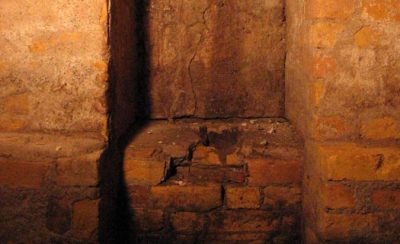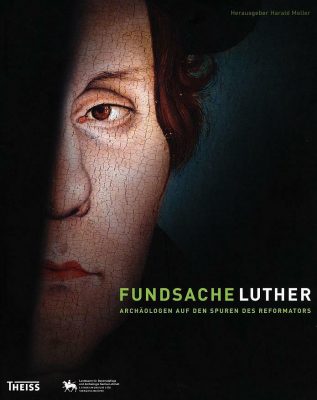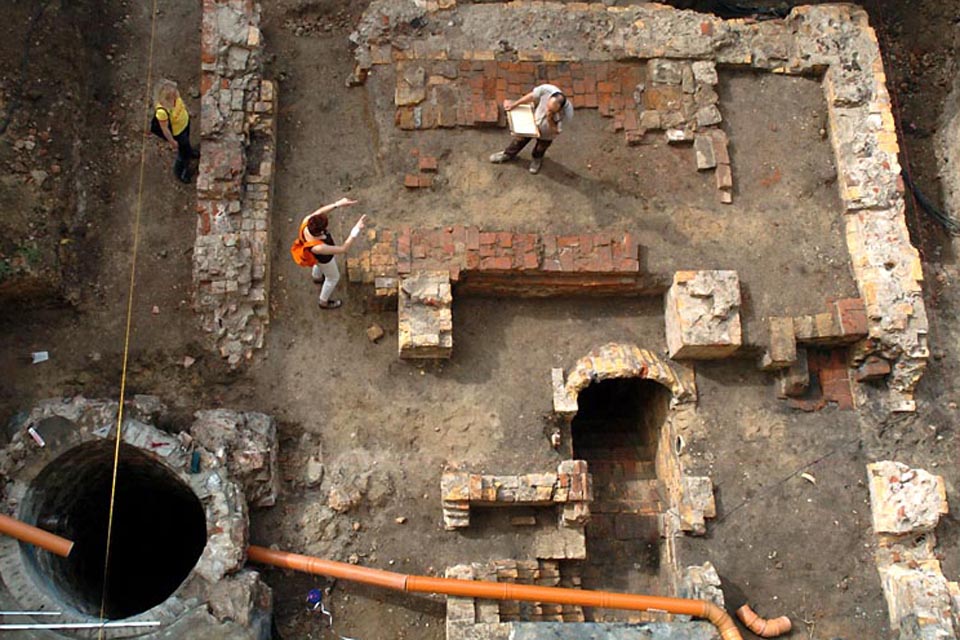Mick Aston Photographic competition 2016 for archaeologists has as its theme “religion”. Perhaps inspiration may be had at the bottom of Martin Luther’s latrine in Wittenberg in Germany

Martin Luther famously told his table companions that “the spiritus sanctus imparted this creation to me on dis cloaca.” Later Luther referred to his “tower experience” of 1516 when he became convinced that man could only receive redemption through the “grace” of God, not through payments and good deeds. Although “cloaca” possibly signified “this lamentable world”, some Roman Catholics soon warmed to the idea that the “dreck” of Protestantism surfaced together with the poops in the latrine of the mighty Reformator.
What both parties seemed to have missed, though, is the profound medieval roots of the expression. Already in 1012, Thietmar of Merseburg can tell us that demons arise from the cloaca to tempt monks [1], while others debated whether it was allowed to pray in unclean places. Opinions were divided, but there is evidence that Luther as a good Augustinian believed you could pray everywhere – even in hell. In Augustine’s time, Father Licentius had sung a verse from a psalm while labouring to rid himself of the filth of this earth. Monica had censured him, but Augustine defended the act, arguing that prayer was appropriate anywhere. Later, in the middle ages, to fall into the “cloaca” came to mean “to fall into sin”. It is indeed possible the reformator meant it both metaphorically and literally, when he claimed to have been inspired while shitting; as he did a lot. Probably, because of excessive fasting in his youth he suffered from obstipation and chronic disorders in his bowls; as did Ignatius of Loyola too.
Very appropriate, in 2004, archaeologists did find the private loo of Martin Luther: a circular 30 cm wide stone latrine below the study of Martin Luther in his house in Wittenberg. The toilet was found in a niche set inside a room measuring nine by nine metres, which was discovered during the excavation of a garden in the grounds of Luther’s house. It is believed his study was located on the first floor of this Naturally – archaeologists being archaeologists – this led to a long excavation and analysis of the waste dump. Rich finds of yellow or green glazed ceramics witness to the large school, which Luther kept there after his marriage. But also exotic faience demonstrate the many important persons – kings, dukes and nobles, whom Luther entertained in his house. Dinners were made with meat from oxen, pigs, deer, geese, chickens, duck, and lots of different fish like cod, plaice, herrings as well as pike and bass from the river Elbe.
Unfortunately, the photos entering the Mick Aston Photographic competition have to be of excavations, aerial photographs, objects or buildings in Britain and Ireland. But even if you cannot enter a photo of the famous latrine in Wittenberg, inspiration may be had if you go for a tour there.
The finds from Wittenberg have been copiously published in a catalogue in 2009.
NOTES:
[1] Ottonian Germany. The Chronicon of Thietmar of Merseburg.
Translated and edited by David A. Warner.
Manchester Medieval Sources 2001. Book IV, chaper 72, p. 201
SOURCE:
 Fundsache Luther. Archäologen auf den Spuren des Reformators.
Fundsache Luther. Archäologen auf den Spuren des Reformators.
Ed. By Harald Meller
Theiss Verlag 2009
ISBN: 978 3 8062 2201 2
The Reformation: Roots and Ramifications
By Heiko Oberman
Bloomsbury Publishing (1994) 2004
ISBN: 056 708 2865
FEATURED PHOTO:
Excavating the cellar with the medieval latrine beneath the study of Martin Luther
Foto: Waltraud Grubitzsch
